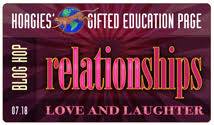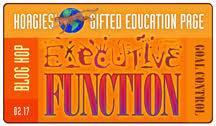Every day I learn so much from children. It can be very humbling to get down on the floor beside them and get a small glimpse into their worlds. This week, in a kindergarten classroom, a young five year old reminded me of the many stories that children bring to our classrooms that impact their ability to demonstrate their learning.
They were working on learning to write the number of the day, the number seven. “Across the sky and down from heaven, that is how you make a seven,” the teacher chanted as she demonstrated it for the class. As I walked around the classroom seeing how they were doing, I noticed one little boy refusing to make the number. When he saw me watching him, his brow furrowed in defiance.
“Do you need help?” I asked. He frowned at me again before saying, “I hate seven!” I was surprised. “You hate seven?” I said, “I thought seven was everybody’s lucky number.”
“I hate it! My sister is seven and she gets everything and I am only five and I get nothing!” At this point the tears started to form.
“What do you mean?” I asked, “Does she get all the toys?” He nodded. “Does she get to do things that you don’t get to?” He nodded again. “I was the youngest child too,” I told him, “and sometimes I hated waiting to do all the things that my older siblings got to do. Do you think when you turn seven that it will be your turn?”
“It won’t,” he shouted, “because she will always be two years older than me. When I am six she will be eight and when I am eight, she will be ten!” He slid under his chair in frustration.
“Can I tell you a secret?” I asked. He nodded as he peeked out at me from under the chair. “Now that I am so old, it’s kind of nice to be the youngest. All of my siblings wish they were young like me.” I finally saw the shadow of a smile. “I have an idea,” I said, “what if you went home tonight and showed her that even though she’s seven and you’re five, you know how to make a seven?”
“I can’t,” he said, tearing up again. “She doesn’t live with me anymore.” It was a heartbreaking moment.
Brene Brown (2017) in her book Braving the Wilderness writes that “pain will only subside when we acknowledge it and care for it” (p.66) and if left unattended has the potential to become anger and over time, rage. As I sat on the floor of that classroom, surrounded by young children, each bearing their own stories and worries, I wondered about acts of defiance, their connections to deeper stories and how easy it can be to make assumptions each step of the way as we try to figure it out. Because on the other side of the defiance are those looming agendas, things that need to get done, like learning how to write a number.
Later in the book, Brene Brown interviews actor Viola Davis who tells her “There’s an unspoken message that the only stories worth telling are the stories that end up in history books” (p. 86). I know that I am swimming in stories and I don’t always take the time or have the opportunity to listen and truly pay attention. Viola goes on to say, “We are all worthy of telling our stories and having them heard. We all need to be seen and honored in the same way that we all need to breathe.” I am drawn back to thinking about acts of defiance, the stories behind them, and wonder how they would look differently if we saw them as fighting for breath? Am I listening now?
One of my all time favorite books is The Truth About Stories: A Native Narrative written by Thomas King. In it he wonders whether Sir Isaac Newton’s quote “To every action there is always opposed an equal reaction” might have been better scribed as “To every action there is a story” (pp. 28-29). I know I will hold the story of the number seven in my heart for many reasons, one of which is the need to share it. If you’ve taken the time to read it, thank-you for that gift. I would like to leave you with my favorite quote from King’s book, one that shows up in various forms at the end of each chapter.
Take [this] story for instance. It’s yours. Do with it what you will. Tell it to friends. Turn it into a television movie. Forget it. But don’t say in the years to come that you would have lived your life differently if only you had heard this story. You’ve heard it now. (King, p. 29).
I hope you have many opportunities to share and listen to stories this holiday season.
Brown, B. (2017). Braving the wilderness: The quest for true belonging and the courage to stand alone. New York: Random House.
King, T. (2003). The truth about stories. Toronto, ON: Anansi.











